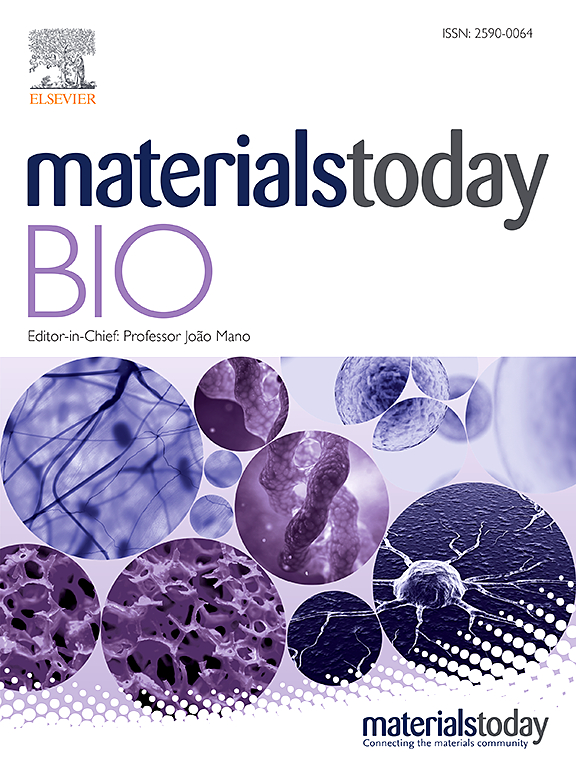The hexapeptide functionalized gold nanoparticles protect against sepsis-associated encephalopathy by forming specific protein corona and regulating macrophage activation
IF 8.7
1区 医学
Q1 ENGINEERING, BIOMEDICAL
引用次数: 0
Abstract
Sepsis-induced systemic inflammatory responses can often lead to brain dysfunction with impaired cognitive function and mobility, known as sepsis-associated encephalopathy (SAE). Currently, there are no effective pharmacological therapeutics to treat SAE. Herein, we demonstrated the hexapeptide functionalized gold nanoparticles P12 that reduced SAE in septic mice with a dual mechanism to down-regulate systemic inflammation. We found that intraperitoneally administered P12 could target macrophages and regulate their inflammatory responses to decrease systemic inflammation and improve mice's cognitive function and mobility with SAE. Depleting peritoneal macrophages diminished the neuroprotective effects of P12 in SAE mice, suggesting macrophages as the effector cells for the neuroprotection by P12. In addition, the proteomic analysis revealed that P12 was capable of sequestering specific circulating inflammatory proteins in the blood of septic mice by forming a protein corona, contributing to the suppression of systemic inflammation. We also found that the local administration of P12 directly to the brain parenchyma effectively inhibited microglia activation and neuroinflammation in mice with SAE. This study provides an insightful understanding of the function and mechanisms of action of P12 in regulating sepsis-associated systemic inflammation and presents a new drug-free nanotherapeutic approach to treat SAE.

求助全文
约1分钟内获得全文
求助全文
来源期刊

Materials Today Bio
Multiple-
CiteScore
8.30
自引率
4.90%
发文量
303
审稿时长
30 days
期刊介绍:
Materials Today Bio is a multidisciplinary journal that specializes in the intersection between biology and materials science, chemistry, physics, engineering, and medicine. It covers various aspects such as the design and assembly of new structures, their interaction with biological systems, functionalization, bioimaging, therapies, and diagnostics in healthcare. The journal aims to showcase the most significant advancements and discoveries in this field. As part of the Materials Today family, Materials Today Bio provides rigorous peer review, quick decision-making, and high visibility for authors. It is indexed in Scopus, PubMed Central, Emerging Sources, Citation Index (ESCI), and Directory of Open Access Journals (DOAJ).
 求助内容:
求助内容: 应助结果提醒方式:
应助结果提醒方式:


